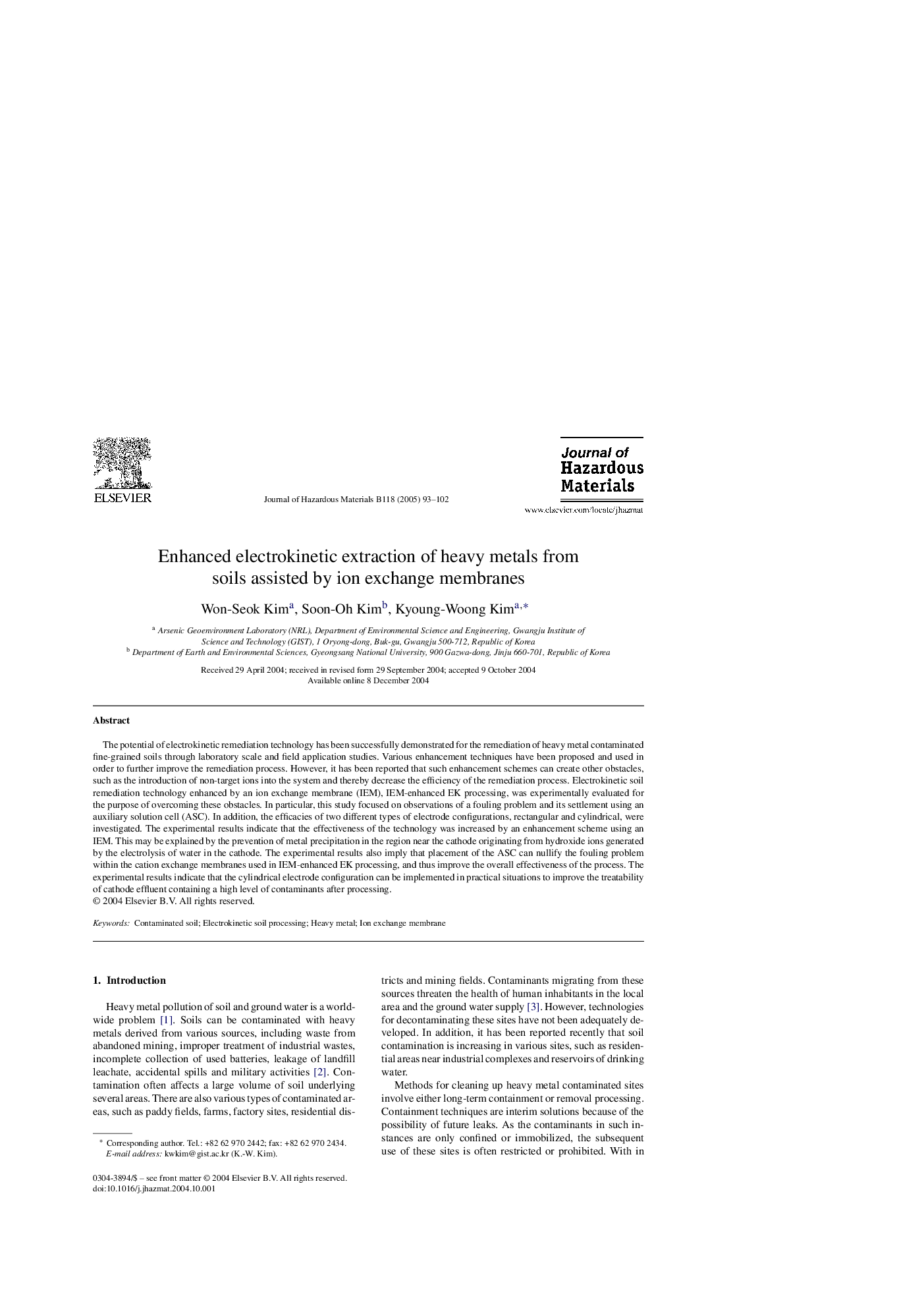| Article ID | Journal | Published Year | Pages | File Type |
|---|---|---|---|---|
| 9674388 | Journal of Hazardous Materials | 2005 | 10 Pages |
Abstract
The potential of electrokinetic remediation technology has been successfully demonstrated for the remediation of heavy metal contaminated fine-grained soils through laboratory scale and field application studies. Various enhancement techniques have been proposed and used in order to further improve the remediation process. However, it has been reported that such enhancement schemes can create other obstacles, such as the introduction of non-target ions into the system and thereby decrease the efficiency of the remediation process. Electrokinetic soil remediation technology enhanced by an ion exchange membrane (IEM), IEM-enhanced EK processing, was experimentally evaluated for the purpose of overcoming these obstacles. In particular, this study focused on observations of a fouling problem and its settlement using an auxiliary solution cell (ASC). In addition, the efficacies of two different types of electrode configurations, rectangular and cylindrical, were investigated. The experimental results indicate that the effectiveness of the technology was increased by an enhancement scheme using an IEM. This may be explained by the prevention of metal precipitation in the region near the cathode originating from hydroxide ions generated by the electrolysis of water in the cathode. The experimental results also imply that placement of the ASC can nullify the fouling problem within the cation exchange membranes used in IEM-enhanced EK processing, and thus improve the overall effectiveness of the process. The experimental results indicate that the cylindrical electrode configuration can be implemented in practical situations to improve the treatability of cathode effluent containing a high level of contaminants after processing.
Related Topics
Physical Sciences and Engineering
Chemical Engineering
Chemical Health and Safety
Authors
Won-Seok Kim, Soon-Oh Kim, Kyoung-Woong Kim,
